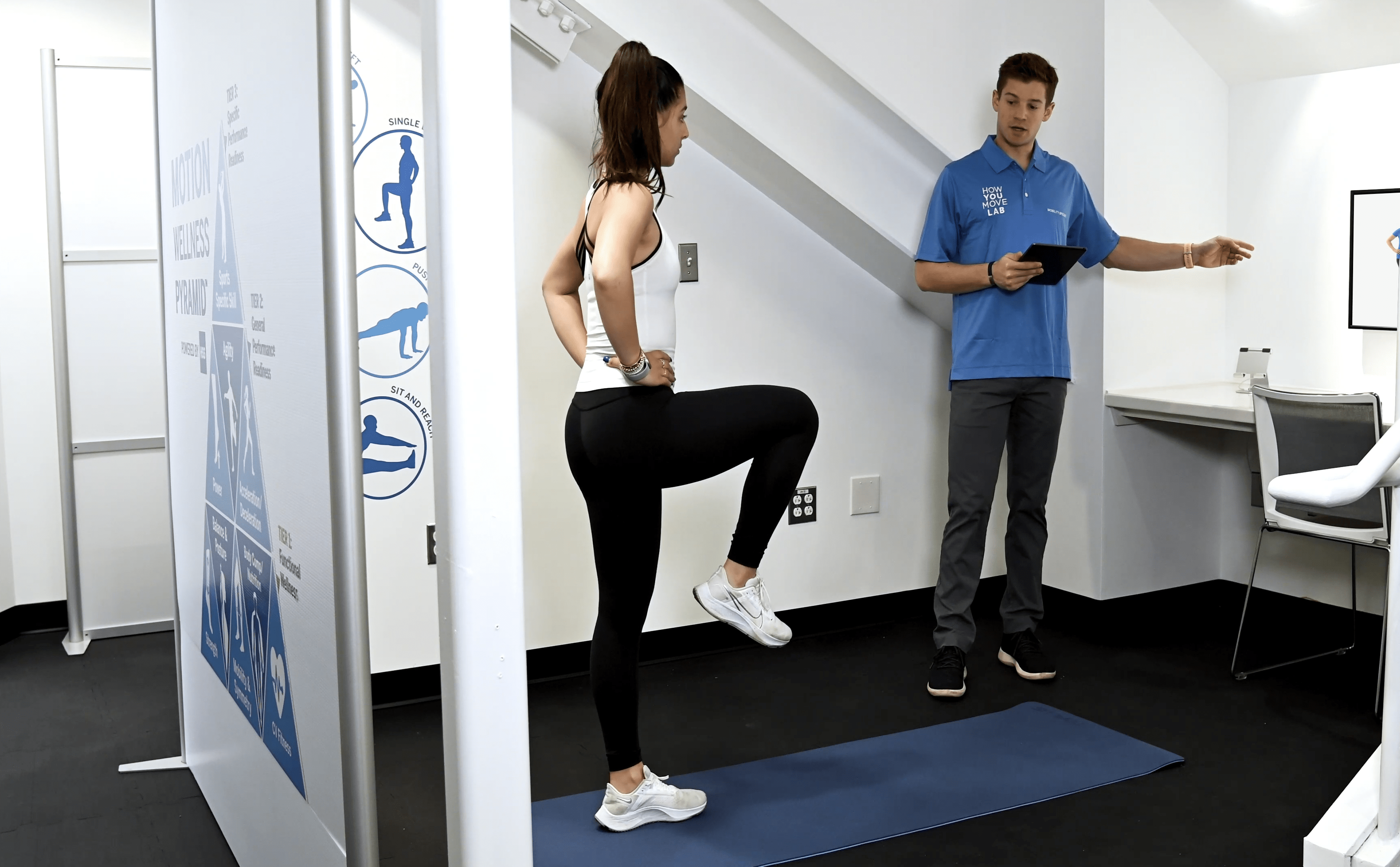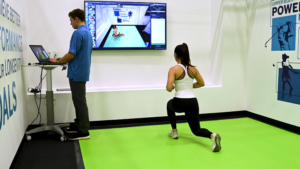
By Julia Barcello
Exercise is critically important to accomplishing your physical health goals. While it’s very important to get regular daily exercise, it may be just as important to your overall well-being to understand how you perform those daily body movements.
This summer, Hospital for Special Surgery (HSS ) has been beta testing its How You Move Lab, at a pilot location in Chelsea Piers in Stamford. The Lab was founded by HSS, the world’s leading academic medical center focused on musculoskeletal health. HSS was recently ranked number one in orthopedics for the 13th consecutive year by U.S. News & World Report. HSS has been among the top-ranked hospitals for both orthopedics and rheumatology for 31 consecutive years.

The How You Move Lab (HYML) uses state-of-the-art technology to help consumers and athletes create consultative action plans to make strategic decisions about their personal fitness and wellness regimen. It offers a personalized fitness and wellness experience that combines breakthrough biomechanical technology, live expertise and education to teach users how to understand their body movement to avoid injury and improve performance.
“For more than 150 years, HSS has been treating patients with a variety of orthopedic needs and learned an enormous amount about what leads to these injuries and how to rehabilitate people after injury,” explains Polly de Mille, an exercise physiologist and RN at HSS. “The hospital’s robust history, years of research and accumulated expertise have given us a lot of insight into the various factors that can lead to either poor athletic performance or injury.”
HYML leverages years of data on treating patients and understanding motion health to help athletes and consumers chart their own performance, wellness and longevity goals, at all levels of the mobility health spectrum. The Lab seeks to better understand how users of all ages are moving, to help identify potential risks, avoid injuries, and for athletes gain a competitive edge.
In some respects, HYML offers preventative therapy. “We want to help users of the Lab reduce the chances for getting hurt and perform at their best, whether they’re playing sports, trying to stay more active or continuing to pursue the activities they enjoy most,” de Mille said.
The Lab will also help correct misconceptions about the relation of body movement to pain experiences. “You’ll often hear someone say, ‘I hurt my back playing golf’, added de Mille. “The reality is that playing golf may have been the final straw that broke the camel’s back among a host of activities that person did during the week, including spending too much time at work glued to their chair.”
The initial orientation session at the Lab lasts 30 minutes which includes a pre-assessment with an HSS mobility specialist to determine an individual’s wellness level score based on a series of exercises and movements.
The full session asks an individual to complete visualized digital assessments to design a customized action plan. The assessments use two breakthrough technology platforms, Proteus and DARI Motion, with the scope and difficulty of activities aligned with their individual fitness level. The two technology platforms allow the mobility specialists to gauge patient performance by capturing and measuring both power and mobility.
In a designated area within the Lab, the mobility specialist leads users through a variety of pulling and swinging motions with the extended arm of the Proteus machine, often standing and squatting. The next area of the Lab features a DARI Motion platform, where users perform a series of squats, jumps, stretches and step sequences. The DARI system uses multiple cameras to capture the user’s motion and create a digital wireframe that is superimposed and mapped to their body for a full, dynamic display on a video screen. The patient’s results from these two technology platforms becomes part of a motion wellness report which users can review with a mobility specialist at the end of their session.
The report scores a patient’s performance across the six categories of the mobility pyramid: strength, balance and posture, mobility and symmetry, power, agility and acceleration/deceleration. The report also includes notes from the mobility specialist, recommendations on stretches and tips, and videos to help educate users on areas for improvement. Follow-up visits to the Lab are recommended for four to six weeks later, to undergo the same exercises to determine levels of progress.
HYML opens officially to the public on Tuesday, September 6th. For more information and to sign up for appointments, please visit: https://www.howyoumovelab.com




